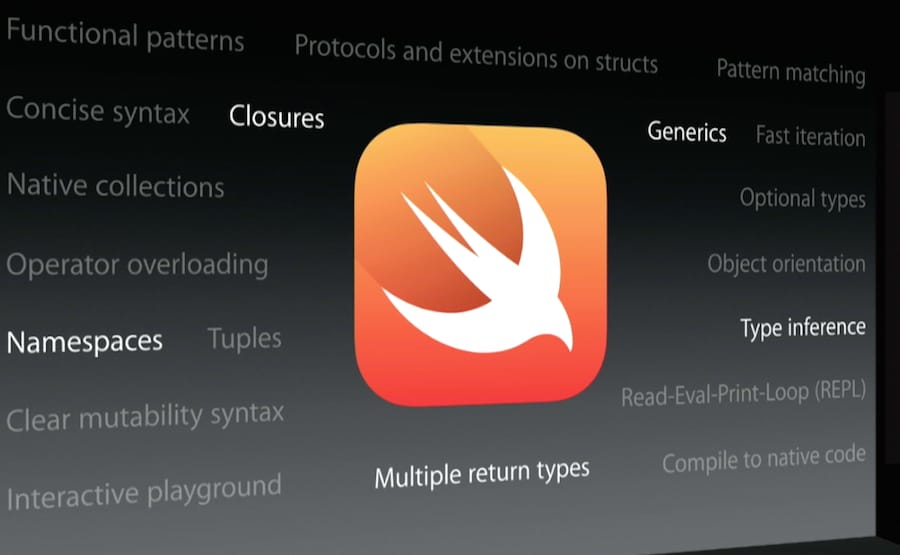Introducing Apple's Swift for iOS
Swift was introduced on WWDC by Apple as a new programming language for iOS and OS X. So we all are soon to be Swift Programmers.

Swift was introduced on WWDC by Apple as a new programming language for iOS and OS X. Apple claims that it’s much faster than Objective-C and has better syntax but let’s get deeper into it and judge for ourselves. Official apple note: > Swift is an innovative new programming language for Cocoa and Cocoa Touch. Writing code is interactive and fun, the syntax is concise yet expressive, and apps run lightning-fast. Swift is ready for your next iOS and OS X project — or for addition into your current app — because Swift code works side-by-side with Objective-C.
Now we all have to download the Apple’s book and dive into it. Below I present some of my first impressions.
Some advantages we can see right now
- one line of code could work as a complete program, no imports, no main method
- constant value (made by keyword
let) doesn’t need to be set at compile time - switch support any kind of data (aren’t limited to integers)
- switch cases don’t need the break keyword and got a lot of more power
- multiple return values in functions
- methods inside enums and structures - this could help is some complicated scenarios
- generic forms of functions, methods, classes, enumerations, and structures
- Tuples - group multiple values into a single compound value, like
let http404Error = (404, "Not Found")
Other helpful things that I could live without
- no semicolons at the end of the statement (ok, but I’ve already got used that ;-) )
- nesting functions
- nested multiline comments
- range operator used in for loops
// contains from 1 to 10 (including last value)
for index in 1...10
// contains from 1 to 9 - half-closed range operator
for index in 1..10
Disadvantages
- Bool is now true/false
- no prefixes for types (means if you type ’s’ then you will get all the autocompletion options with types and other stuff)
- function declaration lost its magic, now looks like this
func sampleMethed(arg1: String, arg2: String) -> (String, Double)
- simpler way to include values in strings:
let testNo = 5
let stringTest = "This is my \(testNo) test."
I liked the old way better
- omitting
@sign when creating arrays, dictionaries, etc.. - I kinda got used to it and liked it, it made non-Objective-C developers scared ;) - new empty dictionary syntax
let newDict = Dictionary<String, Double>()
let newDict2 = [:]
- in
ifstatement, the conditional must be a bool expression, so this won’t work
var newString:String = "aaa"
if newString {
println("OK!")
}
This will
var newString:String = "aaa"
if newString != nil {
println("OK!")
}
// OR
// using optional value
var optionalValue: String? = "aaa"
var result: String = ""
if let stringVal = optionalValue {
result = stringVal
}
println(result)
Overall, maybe it’s new and hip but I don’t think I am gonna like it, especially at the beginning when it’s not really a stable product and a lot will change (probably breaking the code for next 2 years). I feel like playing in a good game while developing so far. We will see how the experience for an iOS developer will change with this. I hope that it will not be as bad and I will not end up writing in old (soon probably unsupported) Objective-C. Still, there is much to learn.
Updates:
- 04.2018: As for today swift has been for a while with us and a lot, I mean, a whole lot has changed over the course of last few years. But it all seems to be for the better. Still, compile time cannot match Objective-C but we all now feel when creating apps like we are using a modern programming language.



Share this post
Twitter
Google+
Facebook
Reddit
LinkedIn
StumbleUpon
Pinterest
Email